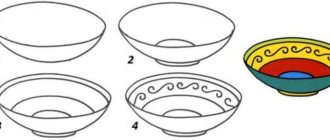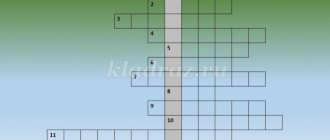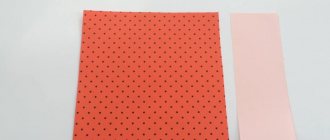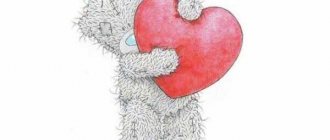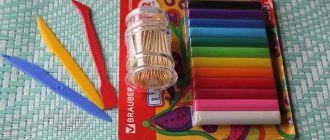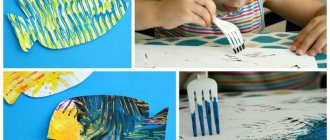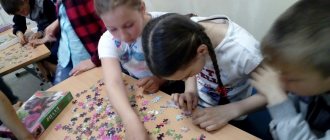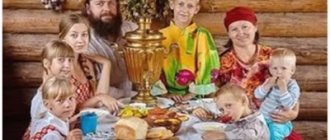Notes on drawing “Different houses have been built in the village” (children 5–7 years old)
Lyubov Petrik
Notes on drawing “Different houses have been built in the village” (children 5–7 years old)
Topic of the week: “My village”
GCD topic: “ Different houses have been built in the village ”
.
Educational field: Artistic and aesthetic development.
5-6 years: Teach children to convey the variety of rural houses : tall and long, lower and narrow, one-story. Strengthen the ability to convey the shape of parts of houses. Practice drawing with colored wax crayons.
6-7 years old: Teach children to convey in a drawing a picture of an evening village, color scheme: the houses are lighter than the night air, multi-colored lights . Strengthen the ability to draw up your plan, compositionally arrange the image on the sheet.
Form of organization: frontal, subgroup.
Preliminary work: Excursions along the streets of the village, looking at photographs, illustrations, postcards depicting houses of different types , conversation on the topic: “What kind of house do you live in?”
, reading proverbs and sayings, poems about the homeland,
constructive games .
Integration of educational areas: “Artistic and aesthetic development (music)
",
"Speech development"
, Social and communicative development",
"Physical development"
,
"Cognitive development"
.
Techniques: Surprise and game moments, creating a problem situation, showing and examining illustrations, conversation, artistic expression.
verbal: reminder, questions, individual answers from children, encouragement, lesson analysis;
visual: viewing, viewing;
gaming: didactic game, use of surprise moments, performing game actions.
practical: independent activities of children.
Demonstration material: house , crafts from “House”
.
Handouts: for children 5-6 years old, album sheets, colored wax crayons or colored pencils; for children 6-7 years old, dark paper, watercolor paints, brushes.
Drawing of a three-dimensional house
In order to add a little reality to the house, it can be made voluminous. To do this you need:
- Prepare drawing materials;
- Let's draw a drawing: start it with a rectangle of any size, whatever is more convenient for you. It's best to start with small sizes first.
- Mentally divide the rectangle into 3 equal parts; you can also use a ruler. And separate one part with a straight vertical line.
- For most of them we find the middle and mark it with a dot. This is how we will outline the roof.
- From the point we draw two straight lines to the side parts of the house. You should get a triangle.
- From the lower right corner of the triangle, draw a horizontal line to the side of the smaller side of the rectangle. That is, we outline the roof of a smaller part of the house.
- Adding windows to most of the house, or living room.
- Let's draw a door.
- You can add a foundation by drawing a narrow rectangle at the bottom of the house.
- Using wavy lines we draw the tiles on the roof. You can also make an edging.
- Add a chimney of the shape you want to the roof.
- We divide the door into two equal parts and draw handles.
- Add a threshold at the bottom of the doors.
- We draw bricks on the foundation.
- We add frames and shutters to the windows.
- You can add a lawn, flowers or a tree.
- All that remains is to color the drawing.
- Our three-dimensional house is ready.
GCD move:
1.Creating a problem situation:
Children go into the room.
Educator: Guys, I have important news for you. A video letter arrived at our kindergarten. Let's read it.
The children sit down . View the presentation “Letter from Dunno”
The teacher reads the letter: “Hello guys! Dunno writes to you. I like traveling very much. Today I flew in a hot air balloon and saw your small Motherland. I did not have the opportunity to land, but I saw that the houses in your village are different from the buildings in the Flower City . I really want to get acquainted with rural houses . Can you help me? I'm sure you'll come up with something. Thanks in advance. Dunno."
Educator: Guys, who is the letter from? (Children's answers)
-What is Dunno asking for? (Children's answers)
-How can we introduce Dunno to rural houses ? ( Draw houses and send to Dunno)
.
Educator: You already know that every person has a homeland. “Motherland” mean to you?
?
(Children's answers)
Educator: The place where we were born is the Motherland. We love our home, we feel very good among friends.
(“Everywhere is good, but at home it’s better ”
,
“Everyone has his own side”
,
“There is no more beautiful country in the world - our Motherland”
)
Educator: Each of us has our own home, which we love, in which our dearest and most beloved people live. We will find out which house is yours in a ball game.
Playing with the ball on the court.
Physical exercise: “Hurry up and catch the ball, and what do you call your house?”
(answer options: big, beautiful, cozy, bright, beloved, etc.)
Educator: Look, guys, how many beautiful words we came up with about home!
Examining the layout of the house.
— There are different houses and they are called differently : wooden, brick. How do you understand these names? (Wooden houses are houses built from wood , brick houses are made from bricks)
Teacher for 6-7 year old children: -Houses can also be one-story and multi-story. How do you understand these names: one-story house, multi-story house? (A one-story house consists of one floor, a multi-story house means it consists of two or more floors)
-Name the multi-storey buildings in our village . (Kindergarten, dormitory building)
Educator: And now it’s time to draw pictures for Dunno, he’s waiting for your help. Before we start drawing , let's stretch our fingers.
Finger gymnastics “HOME”
.
I want to build a house , (Hands above your head in a “house.”)
So that there is a window in it, (Hands in front of the eyes “window”)
So that the house has a door , (Palms turned towards you, closed.)
Nearby so that the pine tree grows (Fingers are spread out, hands are pulled up.)
The dog guarded the gate. (One hand is “dog.”)
It was sunny, (Cross your hands, fingers spread.)
It was raining ("Shaking" movements)
Educator: Guys, I ask everyone to choose a place to work: an easel at the table.
Children sit at tables and stand at easels.
Teacher for children 5-6 years old: (independent activity)
— Tell me, what’s on your tables? (album sheets, wax crayons and colored pencils)
.
What will you draw ? (Children's answers)
- You can start drawing .
-Guys, let's remember how to draw with wax crayons and pencils:
-When painting a drawing, you must not go beyond the contour of the drawn image .
-When painting, strokes should be applied in one direction: from top to bottom, from left to right, or obliquely.
-It is advisable to paint over the drawing without gaps.
-When painting, you need to press evenly on the pencil. If you need it brighter, press hard, if you want it lighter, press it lightly.
Hut
In order to draw a hut, you don’t need much time, you just need to take a pencil and follow the instructions:
- Draw a straight horizontal line.
- Next, draw lines a little sideways and up, forming the outline of the hut.
- We mark the middle on the horizontal line, draw a straight line upward with a stroke, mark a point at the top.
- We draw two straight lines through this point, you should get a cross.
- We mark the boundary between the roof and the house.
- We draw windows in the attic, facade.
- Add shutters, draw logs.
- We decorate the hut.
- The drawing is ready.
Drawing an igloo
If you want to add a little exoticism to your drawing of houses, you can draw an ice house - an igloo.
The algorithm is as follows:
- Draw an even semicircle.
- At the bottom we draw an oval.
- Erase the top part with an eraser.
- We draw in a semicircle, stepping back approximately a centimeter from each.
- We mark bricks on each semicircle.
- We decorate the cubes with suitable colors.
- The ice igloo is ready.
Ice house is very easy to draw and you can teach it to your child.
